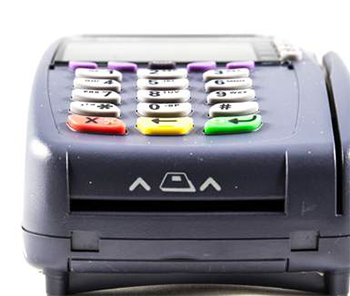By Perry Pokrandt, PHCC/QSC Member
If you haven’t upgraded to EMV terminals for face-to-face transactions, you will be liable for a good portion of the chargebacks banks were previously absorbing. Your liability starts when you swipe or face-to-face key a chip card. If there is fraud or related activity, or simply the inclination of the homeowner to contest your charges on a swiped or face-to-face keyed chip card, you will be liable, not the bank.
The U.S. market is the last of the G20 countries to convert to chip to reduce credit card fraud. But what is interesting to note is that the risk of fraud may have increased for those merchants taking face-to-face transactions without EMV functionality.
EMV – which stands for Europay, Mastercard and Visa – is a global standard for credit cards equipped with computer chips and the technology used to authenticate and secure chip card transactions. In October of 2015, the standard went into place when new industry guidelines were introduced to the U.S. market.
Terry Crowley, CEO of TranSend, a company that makes software to help merchants and their equipment work with the EMV standard said, “There’s an invisible hand at work that is about to kick everyone in the pants and accelerate U.S. dipping into EMV slots. For example, if you use a chip card at the point of sale that says swipe – and you later say it wasn’t me – there is very little a merchant can do to dispute that charge.”
So how is this different than where you are today? We all have dishonest customers who try to scam us out of what is owed through the use of chargebacks. Many of you have gone down this road and have learned how much is needed to prove you did the work and to collect that money that is owed you.
Crowley says: “The game has changed. I have seen a growing instance of chargebacks when the card is chip but the card is swiped instead. Banks do not handle these transactions as they have in the past.”
Simply stated: Banks can choose not to allow you a chance to contest the dispute. This leaves you with the choice to eat your loss or you are forced to go to court to sue for what is owed.
This is scary stuff, so let me try to clarify. The liability shift that came with EMV was intended to reduce fraud and protect the industry. It was not predicted that banks would see this as an opportunity to save themselves the time, the trouble, the headache, and the money of handling chargebacks. The new system says that when they receive a chargeback claim, where a chip card was swiped or keyed face-to-face, the bank can simply wash their hands of the claim and leave the merchant hanging. This means you have no ability to contest the chargeback and claim your cash.
“For those of you swiping, I urge you to think how $42,000 in missing revenue would impact your business!”
“Making it worse, most merchants do not realize that banks have the ability to dispute charges without customer requests to do so,” points out Bill Weeks, director of Merchant Boarding and Exceptions at WorldPay. “There is now a trend that is being seen where banks, not customers are initiating chargebacks because the card was not being properly handled. Banks are out to protect themselves first. This can leave businesses on the outside looking in.”
First Annapolis Consulting Inc. reports, “Hiccups in the U.S. payment card industry’s monumental shift to EMV chip card technology are beginning to surface.” This is a monumental understatement. A serious example of this comes from an HVAC guy who had a $42,000 chargeback awarded to his merchants with no opportunity to contest the claims. Jeff Stock, vice president of Operations at North American Bancard, told Digital Transaction News that they had discussed the issue with the card brands, which manage the chargeback system but leave actual implementation to their issuers. Their response was not inspiring, he said. “They told us everybody knows about the rules for EMV chargebacks and if the merchants want to avoid EMV chargebacks, they need to get an EMV (point of sale) terminal.”
You have three choices to avoid this kind of risk to your company’s financial health. First is to stop taking cards, but that is unrealistic. Second, you can choose to only key in transactions via a phone call to the office, but that costs more than dipping or swiping. Lastly, you can implement a state-of-the-art Bluetooth® EMV reader with mobile app that will work with your Apple or Android devices. You will still run into nasty customers from time to time, but with this system you will be able to fight back against chargebacks.
For those of you swiping, I urge you to think how $42,000 in missing revenue would impact your business! Perry Pokrandt is an account executive with WorldPay US. He can be contacted at 715-272-1246.

